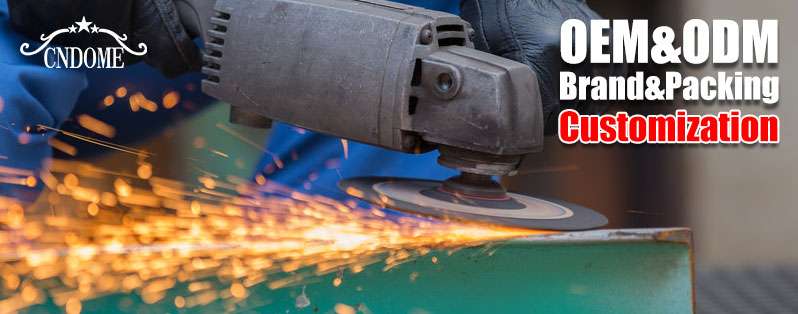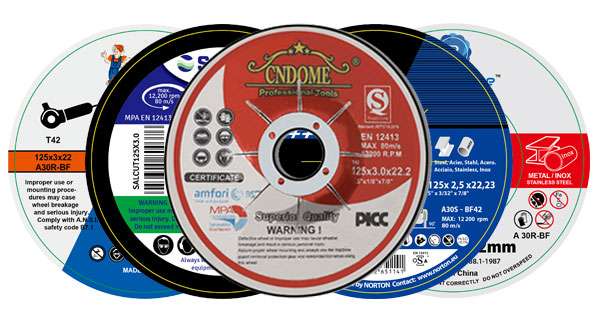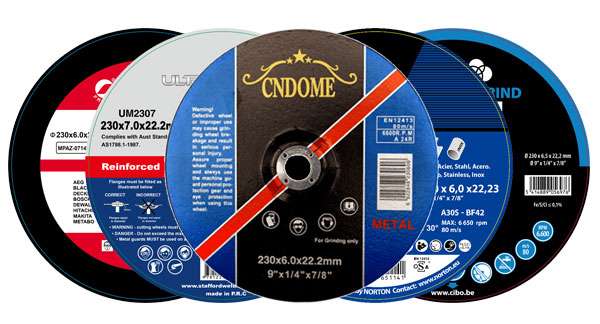Grinding wheels are essential tools in various industries, used for shaping, sharpening, and finishing metal, wood, and other materials. Understanding the materials that compose these wheels is crucial for selecting the right one for specific applications. Here’s a detailed look at common grinding wheel materials and their characteristics:
1. Aluminum Oxide (A)
- Composition: Aluminum oxide is a widely used abrasive material due to its hardness and durability. It is composed of aluminum oxide grits bonded together with a ceramic or resinous matrix.
- Applications: Suitable for grinding high-strength materials such as steel, iron, and tough alloys. It is versatile and works well for both rough grinding and finishing operations.
- Advantages: Offers good performance at a reasonable cost, with high cutting efficiency and longevity.
- Considerations: Can generate higher temperatures during grinding, requiring adequate cooling and lubrication.
2. Silicon Carbide (C)
- Composition: Silicon carbide abrasives are composed of silicon carbide grits bonded with ceramic or resinous materials.
- Applications: Ideal for grinding non-ferrous materials like brass, aluminum, and ceramics. It is also used for grinding cemented carbides and other hard materials.
- Advantages: Harder than aluminum oxide, it provides exceptional abrasion resistance and can maintain sharp cutting edges.
- Considerations: More brittle compared to aluminum oxide, requiring careful handling to prevent fractures.
3. Diamond (D)
- Composition: Diamond grinding wheels use synthetic diamonds bonded to a wheel substrate. They can also have diamond grits embedded in a metal matrix.
- Applications: Suitable for grinding extremely hard materials such as carbides, ceramics, and glass. Used in precision grinding applications where high accuracy and smooth finishes are essential.
- Advantages: Offers the highest hardness and abrasion resistance, capable of maintaining sharpness over long periods.
- Considerations: Expensive compared to other abrasives, making diamond wheels more suitable for specialized applications.
4. Cubic Boron Nitride (CBN)
- Composition: CBN grinding wheels consist of cubic boron nitride grits bonded to a wheel substrate, often with a ceramic or metal bond.
- Applications: Primarily used for grinding ferrous materials such as hardened steels, superalloys, and tool steels. Known for their high thermal conductivity and ability to retain sharp cutting edges.
- Advantages: Exhibits excellent thermal stability, reducing heat-related damage to the workpiece. Offers superior performance in high-speed grinding operations.
- Considerations: Generally more expensive than other abrasives but provides exceptional longevity and efficiency in certain applications.
Choosing the Right Grinding Wheel
Selecting the appropriate grinding wheel material depends on several factors, including the material being ground, desired surface finish, and the specific requirements of the grinding operation. Factors to consider include:
- Hardness: Ensure the wheel material is compatible with the hardness of the workpiece.
- Heat Sensitivity: Some materials may require wheels that generate less heat during grinding.
- Cost and Longevity: Balance between initial cost and the expected lifespan of the grinding wheel.
- Safety and Handling: Consider the brittleness or friability of the wheel material and its impact on safety and ease of use.
In conclusion, grinding wheel materials play a critical role in achieving desired outcomes in various industrial processes. Understanding the characteristics and applications of different abrasive materials empowers users to make informed decisions, optimizing both performance and cost-effectiveness in grinding operations. Whether you’re shaping metal or refining intricate details, choosing the right grinding wheel ensures efficiency and precision in your work.



